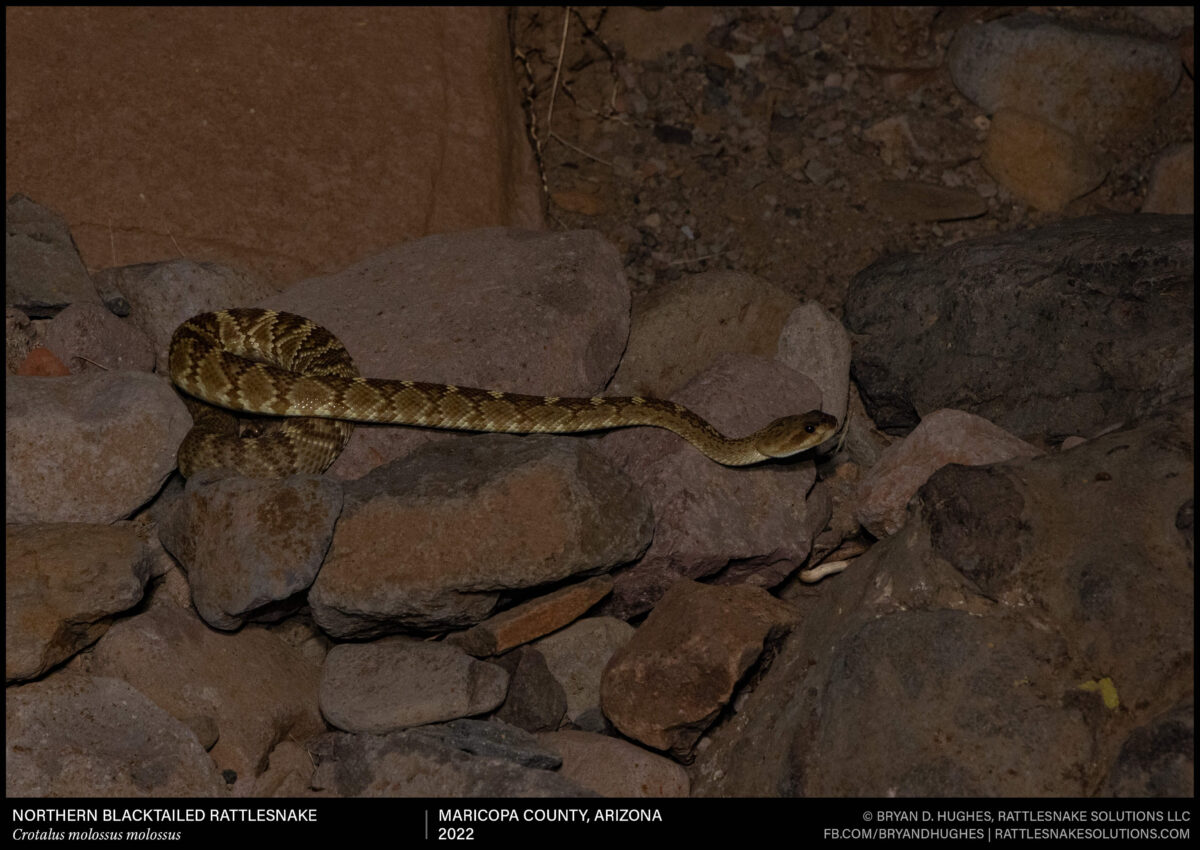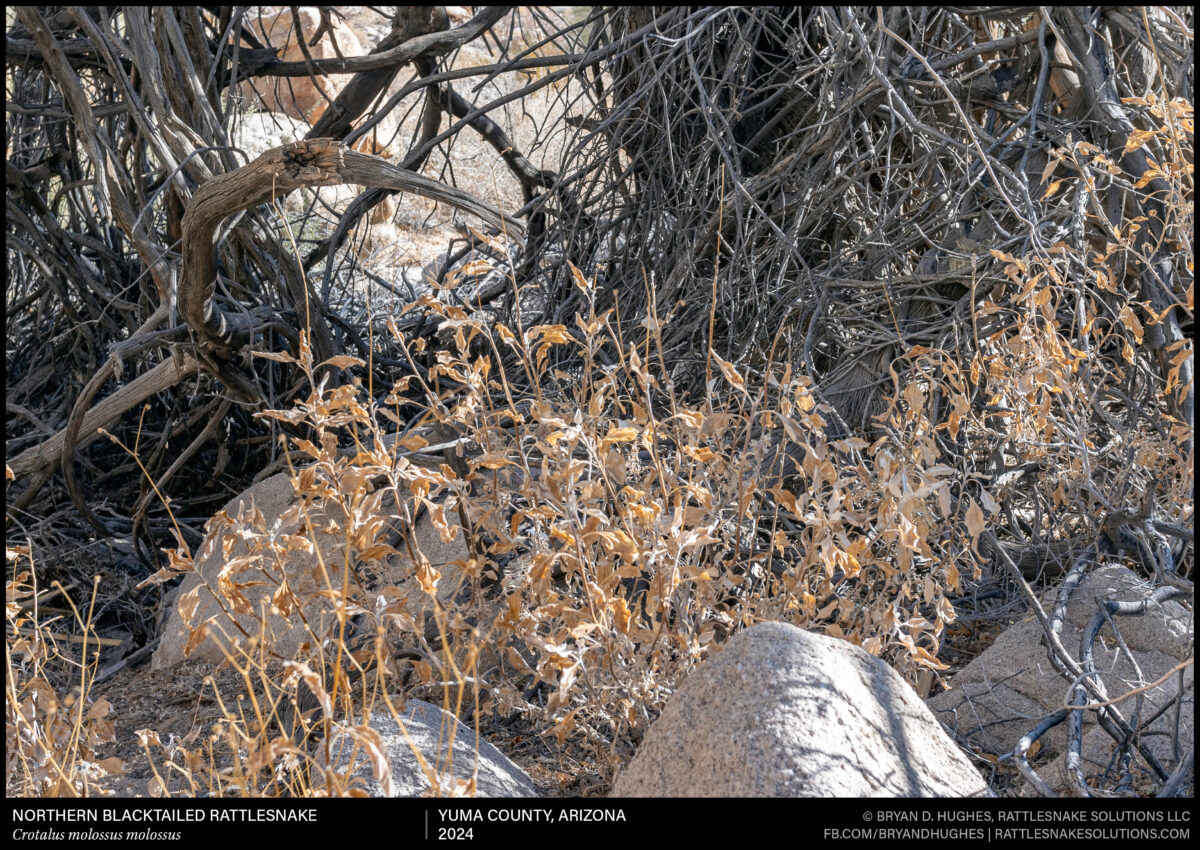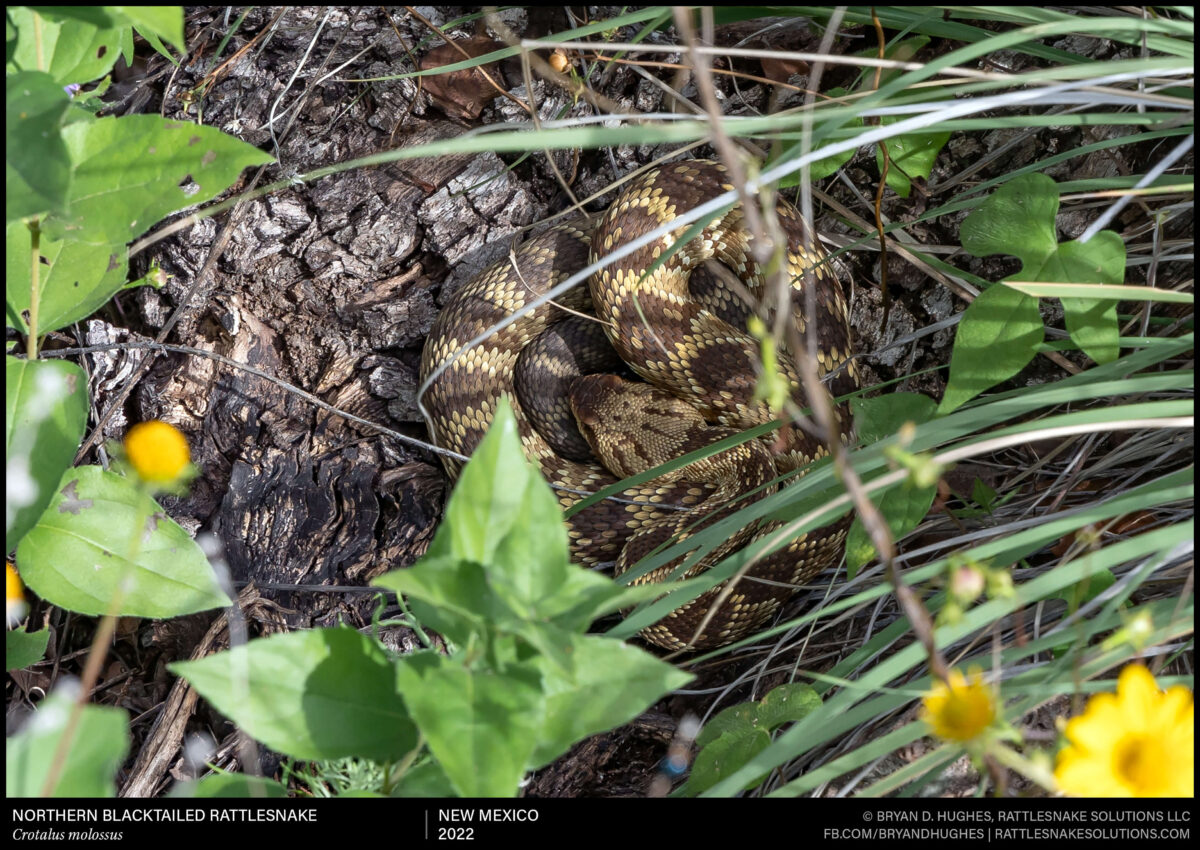A Blacktailed Rattlesnake was seen on a late-night hike near Phoenix, Arizona. These snakes are found in any of the regional parks around Phoenix and Tucson. Interestingly, they are missing, however, from the mountains of central Phoenix, with no records that indicate they were ever there.










